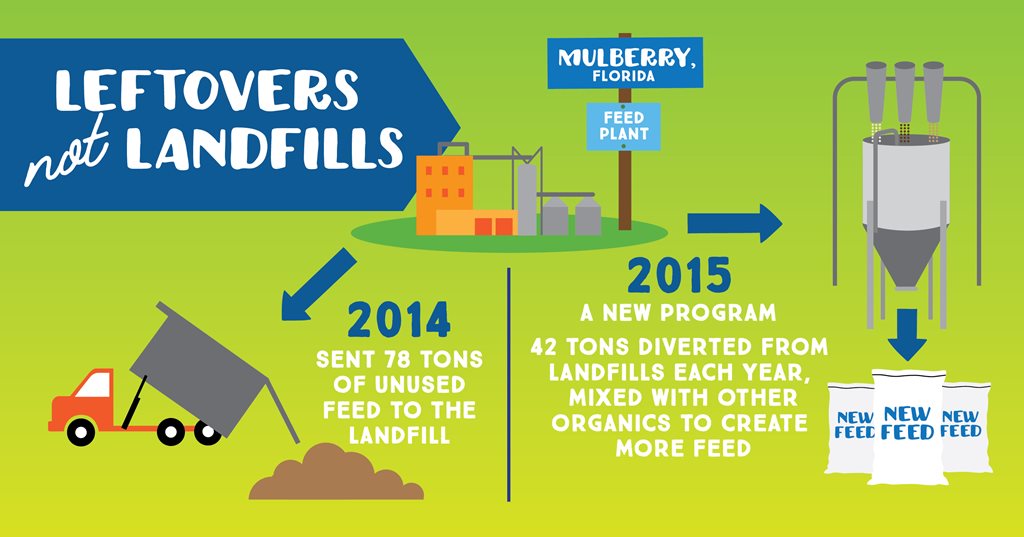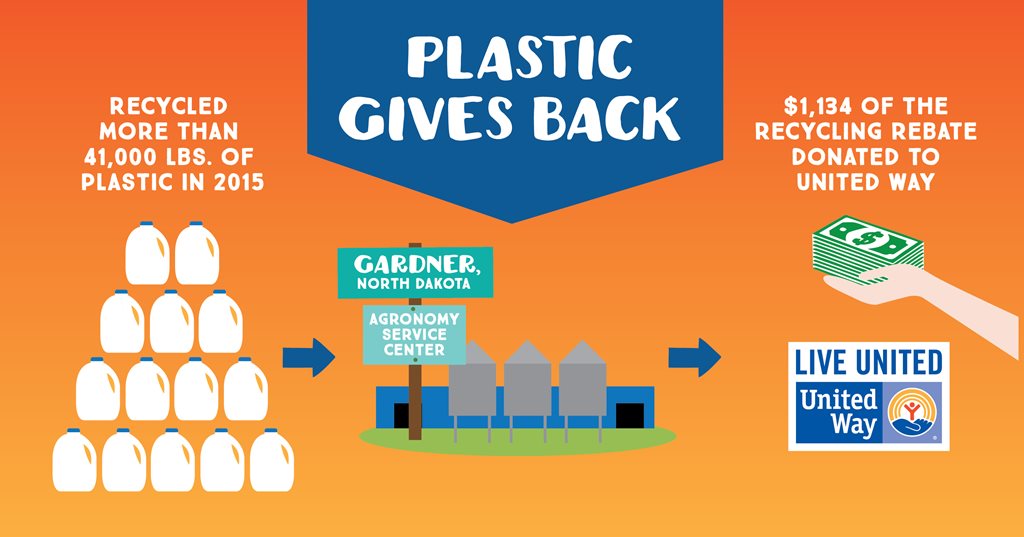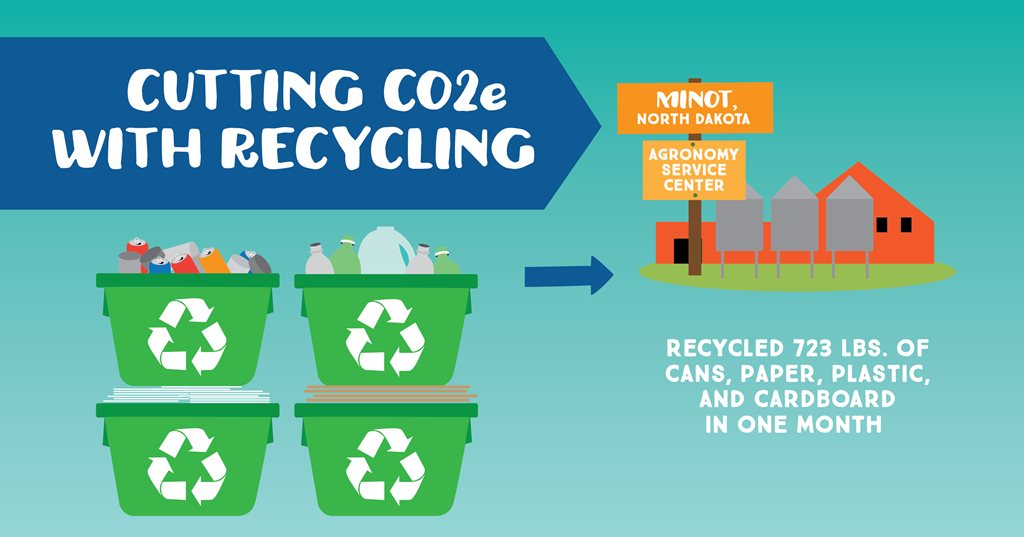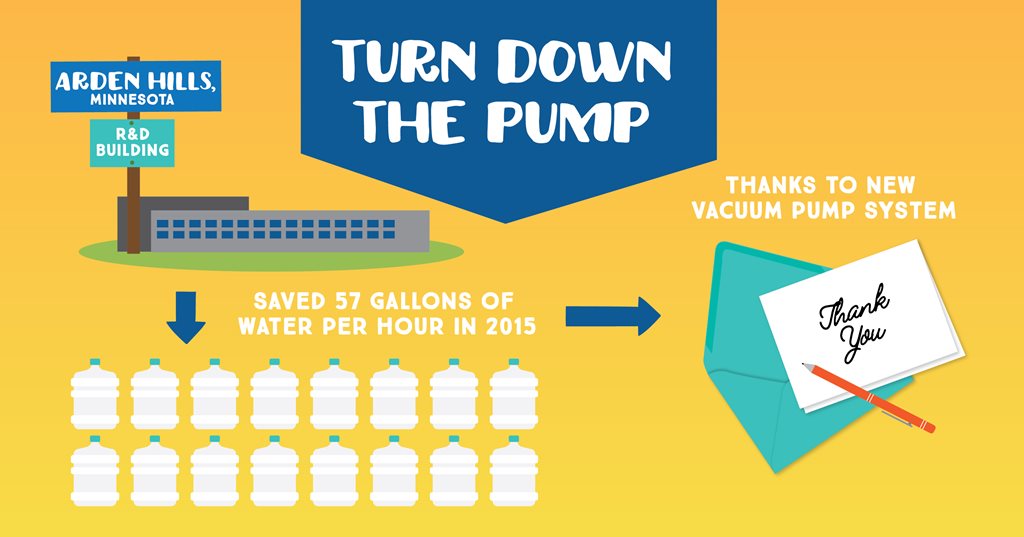The very definition of being a cooperative means working together for the common good. It’s a part of our DNA. Across the country, our teams are tackling projects that are helping us go green for the greater good. We’re proud of their efforts; every little thing we do adds up to something greater. Here are five teams taking action to reduce waste, water and energy usage.

At our dairy plant in Pine Island, MN, the team made modifications to equipment that allows for changes in cleaning cycles. The change is projected to continue to save 500,000 gallons of water a year, or 10,000 baths worth of water.

In Mulberry, Florida, our feed plant was sending 78 tons of unused feed to the landfill. That all changed when they partnered with an organics recycling company to combine 42 tons of that waste with other organics to create more feed. By creating leftovers, they reduced the feed going to the landfill by more than 45 percent.

Employees at the Agronomy Service Center in Gardner, North Dakota, collected used plastic jugs from customers, chip them and recycle the plastic. In 2015, they recycled more than 41,000 pounds of plastic. They donated $1,134 of the recycling rebate to the United Way, a gift to the community that was matched dollar-for-dollar by the Land O’Lakes Foundation.

Employees at our Agronomy Service Center in Minot, North Dakota, started a recycling program for the typical things: cans, paper, plastic. They realized they could recycle even more by crushing cardboard. In the first month, the facility recycled 723 pounds of these materials, equivalent to 3.5 baby elephants.

A new vacuum pump system installed in our R&D building in Arden Hills, Minnesota, now cools pumps with air instead of water. This change saved an estimated 57 gallons of water per hour, every day, and is projected to continue to do so annually.